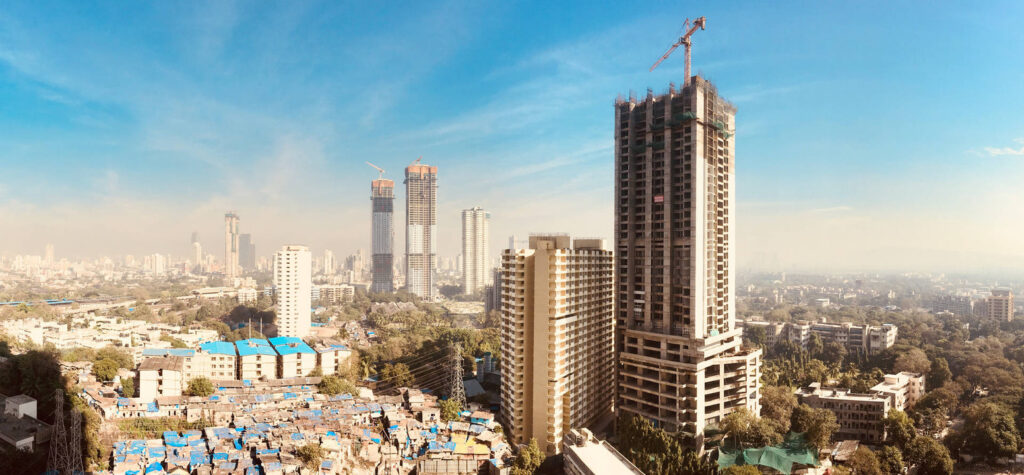The skyline in Mumbai real estate micro markets is changing at a rapid pace, and so is its real estate. New roads, metro lines and bridges, including see Atal Setu, are tying together distant areas. Areas like Borivali, Mira Road and Vikhroli have become homebuyers’ and investors’ favourites. But with prices on the upswing and new homes coming fast, can this growth be for real, or will it slow down? Let’s put that in simple terms.
Why Mumbai’s Property Market Is Booming
Mumbai’s real estate is growing because of better infrastructure. The Coastal Road, metro lines, and Atal Setu make travel easier, so people are looking at areas that were once too far. For example:
- Borivali saw a 21% price rise in five years. A 4BHK sold for 14 crore, beating prices in Santa Cruz.
- Mira Road is popular with people buying homes to live in, not just invest.
- Vikhroli is becoming a business hub with an 18% price jump in five years.
- Chembur has a 14% price rise, but building height limits may slow growth.
- Mahim and Dadar are back in demand due to their location and new projects.
From January to April, Mumbai had 52,900 property sales. April alone hit a seven-year high with over 13,000 sales. The average home price is now 1.57 crore, up 54% since 2021. Most buyers (80%) are people upgrading their homes, while 15% are investors. This shows real demand, not just speculation.
What’s Driving the Growth?
- Better Roads and Metro: New infrastructure like the Coastal Road and metro lines makes it faster to travel across Mumbai. People want homes near their offices to save time.
- New Business Hubs: Big companies like Morgan Stanley are opening offices in places like Goregaon. This makes nearby areas like Borivali and Vikhroli more attractive.
- Lifestyle Needs: Buyers want more than just a house. They want communities with good schools, parks, and amenities. Areas like Worli and Thane offer this.
- Local Comfort: Many people prefer staying in the same area where they know the schools, shops, and neighbors. This creates “micro markets” where every street can have different prices.
Hot Micro Markets to Watch
Here’s a simple look at Mumbai’s top areas for buying a home or investing:
1. Borivali
- Why It’s Hot: Great metro and road links. A recent 4BHK sale hit 14 crore, showing high demand.
- Who’s Buying: Mostly people upgrading homes, some investors.
- Tip: Look for projects with unique features, like tall ceilings or low-density buildings.
2. Mira Road and Dahisar
- Why It’s Hot: Affordable compared to central Mumbai. Mira Road has the highest number of real estate agents in the world!
- Who’s Buying: First-time buyers and families looking for value.
- Tip: Dahisar feels more like “Mumbai proper,” while Mira Road is cheaper but newer.
3. Vikhroli
- Why It’s Hot: Close to business areas like Powai and BKC. Home prices up 18% in five years.
- Who’s Buying: Professionals working in nearby offices.
- Tip: Great for rental income due to commercial growth.
4. Thane
- Why It’s Hot: Top developers, good amenities, and connectivity to Mumbai and Nashik. Prices may outpace South Mumbai in 10 years.
- Who’s Buying: Families and investors looking for lifestyle upgrades.
- Tip: Buy near metro stations for better resale value.
5. Worli
- Why It’s Hot: Luxury projects with sea views and great connectivity to BKC and South Mumbai.
- Who’s Buying: Wealthy buyers and some investors (30-40% of sales).
- Tip: Ready-to-move homes are better for living; under-construction ones may grow in value.
Areas to Be Cautious About
Not every area is a safe bet. Here’s where you should think twice:
- Chembur: It’s green and appealing, but height limits mean fewer new homes, which could limit price growth.
- Malad: Growing, but other areas like Dahisar may offer better price increases.
- Over-Supplied Spots: Some areas have too many new homes, which could lower prices if demand slows.
Smart Tips for Buying in Mumbai
- Buy Near Work: Choose a home close to your office to save time. For example, if you work in Goregaon, look at Borivali or Malad.
- Check Infrastructure: Areas with new metro or road projects will likely grow faster.
- Look for Amenities: Projects with schools, gyms, and parks attract more buyers and renters.
- Think Long-Term: Mumbai’s prices rarely fall. Even if growth slows, your home’s value should hold.
- Parking Matters: A home without parking can be hard to resell. In some buildings, parking spots cost over 1 crore!
Risks to Watch Out For
- High Prices: Some areas have seen fast price jumps, which could slow if too many homes are built.
- Over-Supply: Too many new projects in one area can lower prices if buyers don’t keep up.
- Wrong Location: Areas like Chembur may not grow as fast due to building limits.
Quick Q&A: Where Should You Live or Invest?
- Sea-View 2BHK in Worli or 3BHK in Thane? If your office is in Thane, go for Thane. If it’s in South Mumbai, pick Worli.
- Rent in Bandra or Own in Mira Road? If you’re under 40 and love Bandra’s vibe, rent there. But owning in Mira Road is better for long-term wealth.
- Will South Mumbai Always Win? It’s iconic, but Thane and other areas may catch up as infrastructure grows.
- 4BHK in Lower Parel (No Parking) or Penthouse in Thane? Go for Thane if it has parking. Parking is a big deal in Mumbai.
Final Thoughts
Mumbai’s real estate is exciting but tricky. New roads and metro lines are opening up areas like Borivali, Vikhroli, and Thane, making them great for homes or investments. But don’t just chase high prices—look for places with strong demand, good amenities, and future growth. Whether you’re buying to live or invest, Mumbai’s market is full of opportunities if you choose wisely.

